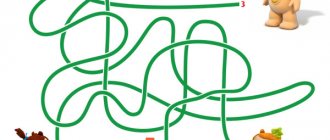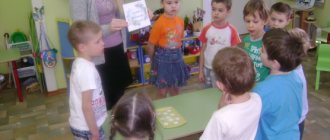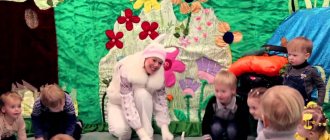First, you need to answer the question for yourself: is a small child really ready to learn to dance? Most children respond to the sound of music with joy and enthusiasm. Moving to music is a great way to develop children's understanding of dance and their understanding of music.
Although your child may seem ready to learn, most dance schools require children to be at least three years old. Classes for children aged three to five years, dance classes are usually called "creative movement" or "preparatory" classes. Many schools offer mommy and me dance classes, giving parents the opportunity to attend classes with their children.
If parents want to introduce their child to music and dance, they should not hesitate to sign up for professional classes. With a little imagination and creativity, you can create a fun and stimulating dance lesson from the comfort of your own living room. The following ideas will help your child develop fine and gross motor skills as he or she balances, jumps and moves. It's worth playing some fun music and showing your child some simple dance terminology with basic foot, arm and body positions.
Exercises for kids
Stretching
Most babies are amazingly flexible. Since flexibility decreases with age, teaching your child to stretch their body at an early age can encourage them to remain flexible in the future.
Simple stretches for kids:
- touching your toes: you need to show how to sit on the floor and reach for your toes (without bending your knees); - leg extension: you need to show the baby how to lie on one side and keep one leg in the air (without bending your knees and stretching your “toes”); - spreading the legs: ask the baby to sit on the floor with his legs spread in the legs apart position (there is no need to force the achievement of a perfect split).
Baby skipping and jumping
Kids love challenges. Since jumping and skipping are skills to master, your child will surely enjoy trying to get their feet off the floor.
Creative ideas for jumping:
- friendly frogs: you need to tell the child to pretend to be a frog and jump around the room on all fours; - babies: let your child pretend that he is a kangaroo, while you need to demonstrate to him how to jump off the floor with both feet; - popcorn: let the child imagine that he is a grain of popcorn that is about to burst inside the microwave. You need to count to three together and then start jumping around like freshly baked corn kernels.
Learning to March
If your baby likes to stomp his feet, you need to show him how to walk like a soldier. Marching is one of the early skills taught in a beginner's lesson. Let your child focus on lifting his legs as high as possible.
Learning to reach out
By raising your child's arms high, you can teach him to stretch and “lengthen” his body. He should be encouraged to keep his hands like this for as long as possible.
Creative examples of exercises:
Trees in the wind: You can tell your child to imitate a tree swaying in the wind by showing him how to raise his arms high above his head and sway back and forth. Flower garden: Let the child pretend that he is a flower that should grow and bloom in the garden. When the sun rises, its petals open and its stem reaches towards the sky. Let your hands be leaves, rising high and reaching towards the sky.
Description of basic positions and dance movements for preschoolers
Anastasia Moiseikina
Description of basic positions and dance movements for preschoolers
Description of basic positions and dance movements for preschoolers
Starting leg positions :
• 1 foot position – heels together , toes apart
• 6th position - heels and toes together
For older people:
• 2nd position – feet shoulder-width apart, only the toes turned as far as possible to the sides.
• 3rd position – the supporting leg is placed at an angle of 45 degrees, the heel of the non-supporting leg is placed in front of the middle of the foot of the supporting leg, also at an angle of 45 degrees.
• 4th position – the supporting leg is placed in the same way as in the 3rd position . The non-supporting leg is placed forward for the length of a small step at an angle of 45 degrees.
Starting hand positions :
• Palms on the waist, thumbs behind, fingers in front. Shoulders and elbows point to the sides
• The fingers are slightly clenched into fists, which are placed on the waist with the back side inward.
• "Shelf"
- arms bent at the elbows, folded in front of the chest.
The right hand rests on the left hand (the hand of the right hand lies on the elbow of the left and vice versa)
.
• Hands (shelf), the index finger of the right hand makes a “dimple”
on the cheek of the same name.
Types of step:
• Calm walking – the step begins with the toe of the outstretched leg, the toe turned to the side.
• Round dance step – this type of step is used in round dances. It differs from a simple step in its great smoothness and determination.
• Added round dance step – “once”
- a small step from the toe of the right
(left)
foot, to
“two”
- the toe of the other foot is placed against the heel of the supporting foot, etc.
• High step - the leg does not move forward, but bends at the knee and rises up at an angle of 90 degrees, the toe is stretched as much as possible.
• Step with a stomp in place - “once”
take a step in place with your left foot next to your right;
on “two”
- stomp with the right foot in front of the left.
Then on “one”
step in the place of the right one, placing it next to the left one;
on “two”
- left foot in front of right; everything repeats itself from the beginning.
• Variable step – performed for 2 measures in a two-beat measure or 1 measure in a four-beat measure. For once
and
“two”
of the 1st beat – long alternating steps from the toe of the right
(left)
foot.
On “one”
and
“two”
of the 2nd measure - three short alternating steps from the toe of the other foot.
on “and”
. The next step begins with the toe of the left foot.
Jumping:
• The starting position of the legs is the main stance , hands on the belt. After the push, land at the same point, placing your foot first on the toe, then on the entire foot. Other leg (non-supporting)
bent at the knee and pulled back. Change the supporting leg.
• Jumping – alternately jumping on the right and left legs.
• Jumping with legs thrown back - one time
- jump
- “point”
with the supporting leg, at the same time the non-supporting leg bends at the knee and is thrown back, heel up.
The non-supporting leg can be suspended or placed behind the toe with the heel up. To “two”
– change of supporting leg.
• Jumping with the legs thrown forward – the right and toe legs are alternately often thrown forward, as if boasting to the audience. The toe of the foot is pointed down towards the floor. Arms to the sides, palms facing forward with the inside.
• Side canter – the same as a side step, only on a jump.
• Gallop forward – the technique is the same, only moving forward rather than to the side. For once
- push and the right
(left)
leg is carried forward, landing from the toe.
The toe of the other foot is placed behind the heel of the supporting leg. On “two”
- repetition.
Dance moves
• "Spring"
- standing still, squat easily, often, continuously.
At the same time, the knees are slightly spread to the sides. The back is straight. This movement can be performed from the 6th position of the legs (on a “narrow path”
). In this case, the knees of the legs do not spread.
• Stomp – standing on your left foot, rhythmically stomp your right, slightly springing both
• "Picking"
:
bend
(left) (heel up)
;
At the same time, slightly bend the knee of your left (right)
leg.
Extending your right (left)
leg straight, place it on your heel.
Do a triple stomp, starting with the right (left)
foot.
• "Herringbone"
- starting position: legs -
“narrow path”
, arms -
“shelf”
,
“belt”,
etc. On
“one”
- turn the feet
(lifting your toes off the floor)
to the right at an angle of 450. on
“two”
- the same heels .
The movement can be performed both on straight legs and on a “spring”
. The back is straight.
• "Harmonic"
- legs together.
On “one”
- spreading the toes out to the sides, on
“two”
– spreading the heels, on
“three”
– spreading the toes again, and on “four” – spreading the heels. Then return to the starting position in the same order.
• "Stompers"
- starting position - legs together, slightly crouched, hands clenched into fists on the belt
(akimbo)
. Often take turns stomping your feet in place.
• "Comb"
- children stand in a checkerboard pattern.
At a distance from each other, facing in the same direction. At first, the second line passes forward through the first, stopping slightly ahead. Then the first (being behind)
passes forward through the second, stopping slightly ahead, etc.
Constructions
• Column – children stand behind each other, in one direction, keeping intervals between each other.
• Line - children stand next to each other, in the same direction, maintaining intervals between each other.
• Chain – children stand half-turned behind each other, holding hands.
Dance positions for kids
It's never too early to start learning the five basic dance positions. Your baby may be able to put his feet in first and second position, but don't expect too much just yet. Small legs are difficult to position “right.”
You can take a small chair for the child to make it easier for him. It’s worth starting from the first position: putting the child’s heels together and turning his toes to the sides. After this, you need to see how long the baby can hold this position. As he grows up and learns to control his legs better, you can move on to other positions. Pretty soon he'll learn all five.
Plie for babies
Most likely, the baby will be able to bend and straighten his knees. In dancing, bending the knees is called plie. To begin with, let the child bend only halfway to the floor, then you can show him a real plie.
How and where to start?
- You can start from the moment when the baby holds his head well. And slowly, with him in your arms, you can make the first curtsies. Then you can take his hand in yours and spin around like in partner dances. Then it can be waves - you can hold the baby in different positions and rock him a little. Smile at him and hum. These are the very first dance lessons.
- It is better to choose daytime hours for classes, since children get overexcited very quickly and may have difficulty falling asleep or sleep restlessly after active activities.
- Choose the right time. The child is well-fed and in a good mood. But if he is distracted by some important activity, such as putting out candy wrappers, I don’t know if you can tear him away from it. Maybe you turn on the music and he will drop everything himself. In general, look at the situation.
- If your child suddenly refuses to do something, don’t force him, put it off until later.
- Of course, to dance at home, you will have to make room for it. So that the child can spin around, and squat, and wave his arms and not run into the furniture.
- Start dancing yourself and call your baby, kids usually agree with pleasure.
- Then later you can introduce so-called musical instruments into your activities - these can be wooden spoons, maracas, bells and whatever the child desires.
Children's dance school
Dance directions
Modern choreography
Rhythm, plasticity, stretching - all this is combined in modern children's choreography. This is one of the most popular trends in modern dance schools for children.
Modern
This trend appeared in the USA at the beginning of the last century and is quickly gaining popularity in children's dance schools. Through modern training, young dancers learn not only to control their body, to move from a state of complete relaxation to a state of tone and rhythm, but also gain spiritual harmony and clarity of thought.
Hip-hop
One of the most popular “street” styles, which combines elements from breakdancing, locking and other freestyle styles. The main features of hip-hop in children's dance schools are clear movements and a fair amount of improvisation.
Jazz funk
This style was formed in the 20s of the last century at the intersection of hip-hop, pop art, and jazz styles. In choreography schools in Moscow and other cities, this direction is less developed than others, but the abrupt, sharp movements combined with the smoothness and plasticity characteristic of this dance find their fans.
Jazz Modern
Modern expression, jazz rhythm, and classical choreography techniques are woven together into a unique jazz-modern dance direction. This direction is dynamic and emotional. The main elements of the dance are jumps, rotations, rhythmic and smooth movements of the body. It is especially useful to send an active child to modern jazz dancing. This is a good way to release energy.
House
House is often confused with hip-hop, but this dance in choreography schools for children has its own differences. It is more flexible and helps develop the child’s flexibility, sense of balance and ability to control his body.
R'N'B
This is one of the most fashionable trends in dance schools for children. Clear, fashionable, stylish R'n'B appeals to children of all ages. The dance has a lot of springy movements, turns, and slides, which develop a sense of rhythm and flexibility in children. In addition, this is one of the types of choreography for children and adults, which is often used in music videos and stage productions by stars.
Street jazz
This style came to dance schools for children from street festivals. This is a free dance that not only combines elements from different directions, but also includes a lot of improvisation. The arms, body and legs are equally involved, which makes street jazz an excellent workout and contributes to the physical development of the child.
Features and benefits of classes
For children, dancing at school will become a serious hobby and favorite pastime thanks to the teaching methodology, which has the following advantages:
- Children are taught by experienced teachers.
- Children are offered an individual education program.
- Developing in children the ability to perform on stage and win the sympathy of the audience.
- Lessons for young children take the form of games.
- Children are given exercises to develop a sense of rhythm, hearing and physical fitness.
As a result of attending classes, the child will learn to better control his body, strengthen his muscle corset, master the skill of improvisation, become stronger and more resilient, and develop determination and perseverance.
To instill a love of dance in children from an early age, sign up for a trial lesson on our website!
What will the child receive in the first lesson?
- Communication with peers. Your baby will meet other kids, chat and maybe even find a friend.
- Development of coordination. While learning the elements, the body and brain work. On the one hand, there is an active development of intelligence, because the baby is learning new things. On the other hand, it improves plasticity, flexibility and coordination, which are necessary for harmonious development.
- Positive emotions. Dance training is an active pastime. Children laugh while they repeat new elements after the teacher. And during movements, as well as during sports, the hormone of joy is produced.
The baby will return home calmer or, on the contrary, joyful, and will begin to show his parents what movements he has learned and tell him who he met.
Repertoire and movements
To begin, offer the music you have, it could be any children's song collections or just children's music.
It can also be natural or modern music.
I think that since we will be dancing with the baby, the music should be baby music. And you watch your child, which one he likes best, and choose that one.
It can include both just music and children's videos.
But the important point is that the mother acts as a choreographer and first shows everything herself, then we repeat the movements with the child’s hands.
Then, as he learns, the child will perform the movements himself.
Of course, children aged one or two will perform the simplest movements. Use songs with movements; Zheleznova’s collections are well suited for such activities.
To begin with, do not take too many songs, 3-4 will be enough. Then you can increase your practice to 4-5 songs.
We started learning 4-5 songs. Fix the material the next day and the next. After the baby has already memorized these songs enough, change them to new ones. But if the baby asks for a specific one, then do not refuse it.
Do not make the music too loud, as this may frighten the child or discourage the child from dancing.






